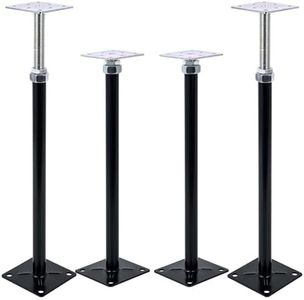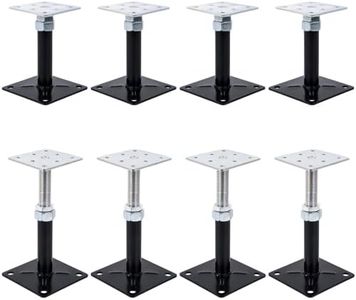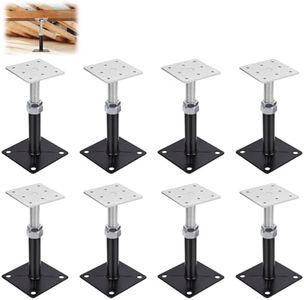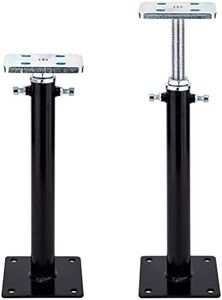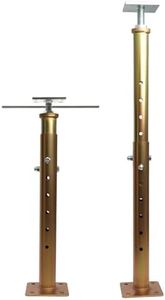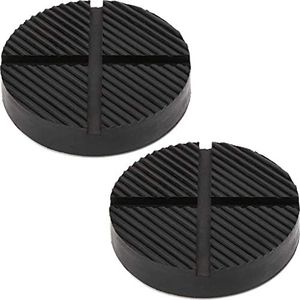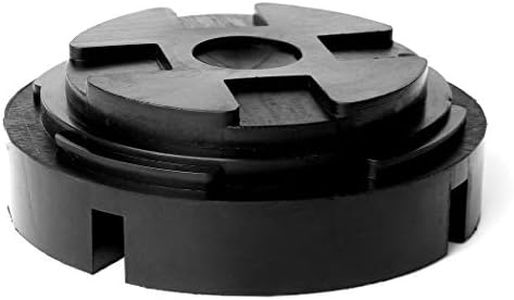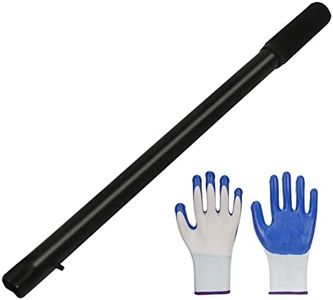We Use CookiesWe use cookies to enhance the security, performance,
functionality and for analytical and promotional activities. By continuing to browse this site you
are agreeing to our privacy policy
9 Best Floor Jacks
From leading brands and best sellers available on the web.By clicking on a link to a third party's website, log data is shared with that third party.
Buying Guide for the Best Floor Jacks
Choosing the right floor jack is essential for safely lifting your vehicle during maintenance, tire changes, or repairs. Floor jacks come in different types and capacities, and understanding the key features will help you match the tool to your vehicle and usage needs. Always prioritize safety and make sure the jack you select is suitable for your vehicle’s weight and lifting requirements.Weight CapacityWeight capacity indicates how much weight a floor jack can safely lift, typically measured in tons. This is crucial because using a jack that can't support your vehicle's weight may lead to dangerous accidents or equipment failure. Common capacities range from 1.5 to 3 tons. Lighter vehicles like compact cars might only need a 1.5 or 2-ton jack, while trucks and SUVs generally require 2.5 or 3-ton jacks. To pick the right one, check your vehicle's weight (found in the owner’s manual or driver’s side door jamb) and choose a jack that can lift at least that much, ideally with some margin.
Lifting Range (Minimum and Maximum Height)The lifting range, or how low and how high the jack can go, determines if it can fit under your vehicle and raise it high enough for your work. This is important because sports cars and vehicles with low ground clearance need jacks with a low minimum height, while off-road vehicles benefit from a higher maximum lift. Low-profile jacks typically start lifting from around 3 inches, while standard ones may start at 5 inches. Maximum height can vary from 13 to over 20 inches. Check your vehicle’s clearance and your intended maintenance (like if you need to fit jack stands underneath) to choose a jack with a suitable lifting range.
Jack Type (Hydraulic, Scissor, Bottle)There are different types of floor jacks: hydraulic, scissor, and bottle. Hydraulic floor jacks, the most common in garages, are easy to use and offer a smooth lifting action, best for frequent or heavier work. Scissor jacks are compact and lightweight, often found with spare tires but require more effort and are generally less stable. Bottle jacks offer high lifting heights and capacity in a compact size but can be too tall for cars with low clearance. Pick a jack type based on how often you’ll use it, the type of vehicle you have, and how much portability you need.
Build MaterialThe construction material affects the jack’s durability, weight, and mobility. Steel floor jacks are very sturdy and durable, suitable for heavy or regular use, but can be quite heavy. Aluminum jacks are lighter, making them easier to maneuver and transport, though sometimes less robust. Some jacks use a combination. If you need to move the jack around a lot or keep it in the trunk, a lighter jack is handy. For garage use where strength is key, heavier steel models are a good choice.
Saddle Size and PadThe saddle is the part of the jack that makes contact with the vehicle. A larger, padded saddle provides greater contact area and better grip, reducing the risk of slipping and protecting your vehicle’s frame. Smaller saddles might fit tight spaces but can be less stable. When picking a floor jack, consider the shape and surface of your vehicle’s lifting points and choose a saddle that matches for safety and stability.
Maneuverability (Wheels and Handle Design)How easily you can position and use your jack makes a difference, especially for frequent use. Jacks with smooth-rolling wheels and swivel casters are easier to slide under your vehicle. A longer handle provides more leverage, making lifting easier, while some feature foam grips for comfort. If you have a cramped workspace, consider a jack with a compact design and easy-to-move features.
